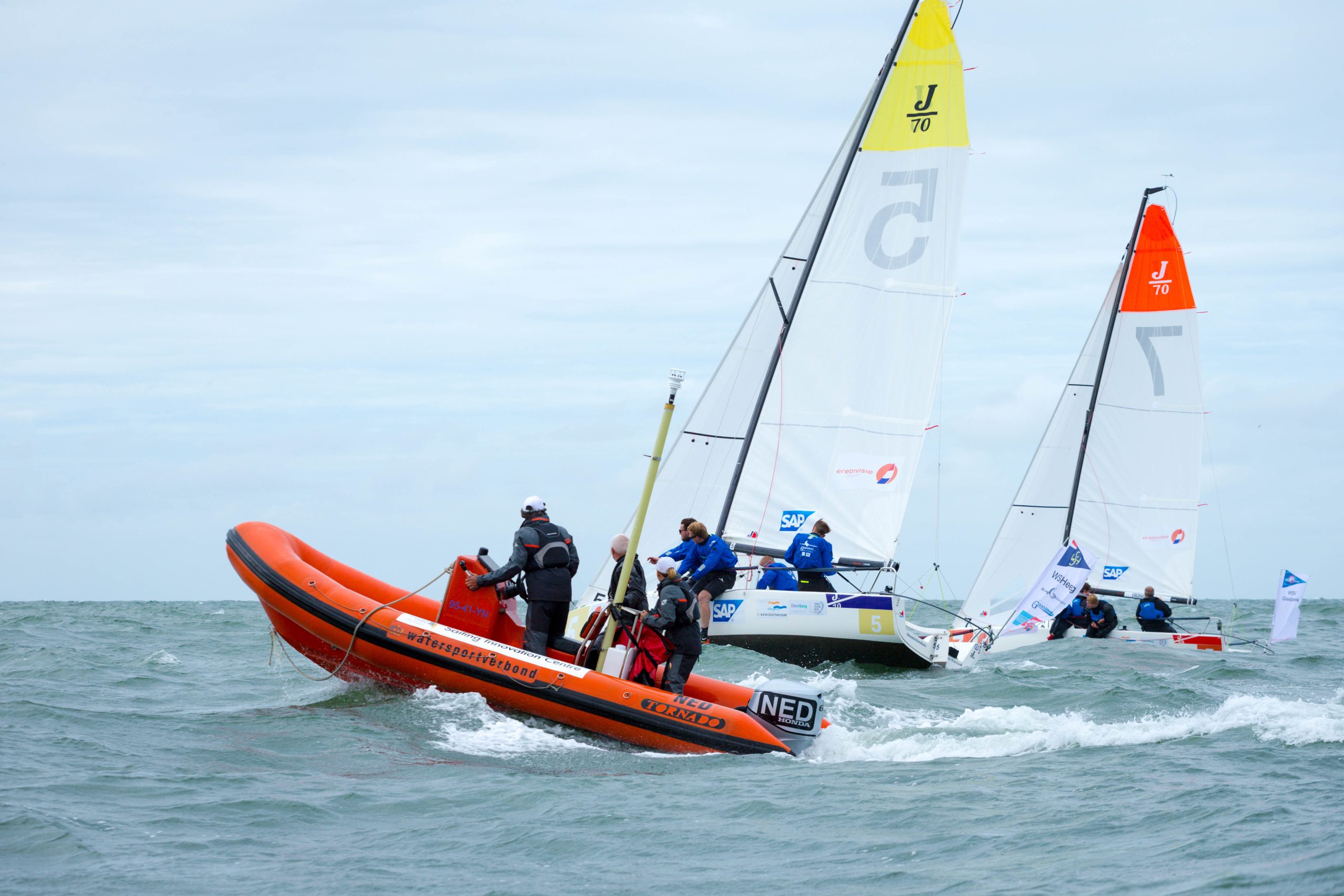Video streams from drones, sensors, on-ship cameras, augmented and virtual reality and computer graphics technology. By making sailing regattas more high tech, the Sailing Innovation Centre, in collaboration with TU Delft researchers, are striving to help athletes perform better and, at the same time, make the sport more appealing to a larger audience.
During training sessions, coaches are usually too far away to see exactly what is happening on board. Video tools would allow the coach to look over their shoulder from closer by. (Photo: Klaas Wiersma)
The timing was perfect. As hordes of people gathered in Scheveningen to witness the final phase of the Volvo Ocean Race, the Sailing Innovation Centre (SIC) – a consortium which includes TU Delft and whose mission is to stimulate competitive sailing in the Netherlands – presented its newest research project. It will transform an area at sea in front of Scheveningen, the size of 100 square sea miles, into a testing ground for new sailing technologies.
SIC recently received a grant worth more than EUR 4 million from the European Union to develop this ocean laboratory over the next four years.
Anoek van Vlaardingen, the coordinator at the TU Delft Sports Engineering Institute, is closely involved in the project. She gave a press presentation last Monday in Scheveningen.
“Competitive sailing is in decline in The Netherlands,” she said. “We need to make the sport more appealing to a broader audience. The rules are not always clear and the sports arenas are not clearly demarcated. Where is the starting line and where is the finishing line? We want to develop imaging and video techniques that make the regatta easier to follow.”
‘Technology in sailing is lagging behind’
In the near future, interactive gaming applications will also make sailing competitions more interesting and interactive, especially for younger audiences. “Technology in sailing is lagging behind”, Van Vlaardingen said. “This has to change.”
In collaboration with several partners, amongst which KPN, an information grid will be created at sea. “We will collect information on waves, currents, and wind at different locations in the laboratory using buoys that can transmit information to shore via 4G.”
“An infrastructure like this will also allow the athletes to send information to their coaches. This could be video footage during their race or physiological parameters such as heart rate. The competitors have many complicated factors to consider: the boat, the wind, the sea currents and more to decide what to do and how to respond. While athletes are trained to take decisions based on a complex combination of factors, for external observers such as their coaches and the public, the decisions are not always clear.”
“During training sessions, coaches often follow a sailing team at a short distance in a speedboat. They are usually too far away to see exactly what is happening on board. They do not see how team members communicate with one another, for instance. Video tools would allow the coach to look over their shoulder from closer by.”
On the lookout for a PhD candidate and a postdoc researcher
As part of the project, the consortium is now looking for a PhD candidate and a postdoc researcher to work on the graphic design of new applications and on models to explore patterns to improve training analysis. The hope is that the Dutch Sailing Team will benefit from the Delft research. The work will be developed in a practical setting with the strong collaboration of the sailors and coaches.
Besides SIC and TU Delft, also the city of The Hague, the Dutch water sports federation Watersportverbond, TNO, KPN and Svasek Hydraulics participate in this EU project.



Comments are closed.